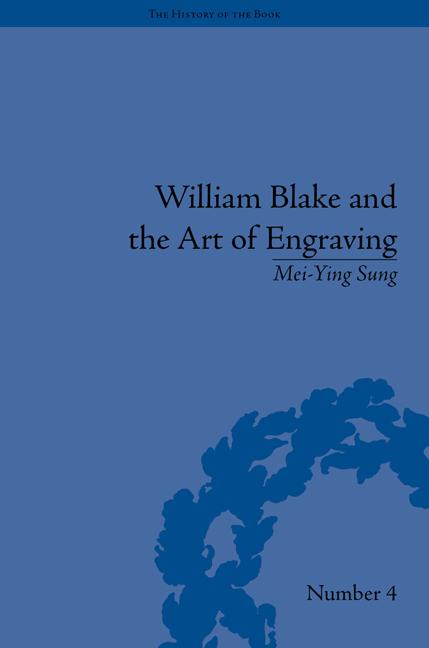Book contents
- Frontmatter
- CONTENTS
- Abbreviation
- List of Figures
- Acknowledgements
- Introduction
- 1 The History of the Theory of Conception and Execution
- 2 The Evidence of Copper Plates
- 3 Blake's Engraved Copper Plates
- 4 Copper Plate Makers in Blake's Time
- 5 Blake's Virgil Woodcuts and the Earliest Re-Engravers
- Conclusion
- Notes
- Works Cited
- Index
1 - The History of the Theory of Conception and Execution
- Frontmatter
- CONTENTS
- Abbreviation
- List of Figures
- Acknowledgements
- Introduction
- 1 The History of the Theory of Conception and Execution
- 2 The Evidence of Copper Plates
- 3 Blake's Engraved Copper Plates
- 4 Copper Plate Makers in Blake's Time
- 5 Blake's Virgil Woodcuts and the Earliest Re-Engravers
- Conclusion
- Notes
- Works Cited
- Index
Summary
Amongst studies of Blake's etching and engraving techniques on copper, there is no doubt that the most important in recent times are those put forward by Robert Essick and Joseph Viscomi. Both of them have dominated discussion of Blake's printmaking techniques, especially the technique of relief etching. Essick's William Blake, Printmaker (1980) brings out the artisan's life of Blake, his profession, his medium and technique. Throughout William Blake, Print-maker, we can see for the first time how Blake worked on copper plates. Essick successfully gives us a clear view of the life Blake lived as a professional engraver and printmaker under the general public taste of the eighteenth century, and his struggle to move from being an ordinary reproductive printmaker to being an original artist. Following Essick's practical and detailed research, Viscomi's influential Blake and the Idea of the Book has similarly become one of the most indispensable books for Blake studies. Working apparently increasingly interdependently, at least after William Blake, Printmaker, Essick and Viscomi have had intellectual collaboration and shared similar ideas. Their argument for the unity of invention (or conception) and execution has also become widely known, and cannot be ignored by anyone studying Blake's copper plates and techniques.
The theory of the unity of invention and execution is subtly presented in Essick but pushed to the extreme by Viscomi. This is most clearly expressed in Blake and the Idea of the Book (1993):
With the exception of Experience, Blake left virtually no manuscripts of illuminated poems, let alone fair copies of them. … Like tracings in the production of an engraving drafts of poems appearing on illuminated plates may have been discarded after serving their purpose, replaced by the ‘printed manuscripts’. The poems – or at least the minor and major prophecies, texts whose forms were not externally structured by rhyme schemes and ballad forms – may have been composed just as the illustrations were, spontaneously and almost automatically. As persuasively demonstrated by Essick in Blake and the Language of Adam, Blake's mode of literary production responsible for the prophecies was much as Blake himself described it – unpremeditated.
- Type
- Chapter
- Information
- William Blake and the Art of Engraving , pp. 19 - 44Publisher: Pickering & ChattoFirst published in: 2014



